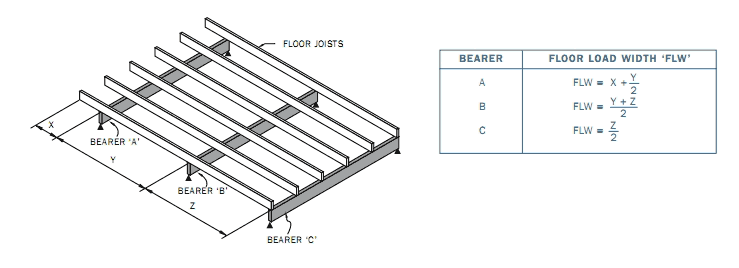Floor Load Limit Definition

Step 1 check the code.
Floor load limit definition. First check the local code for allowable live load dead load and deflection see figure 2. A uniform load rating on a beam can easily be translated into what an equivalent maximum point load can be. For this example i ll use the icc which serves as the model for many state and local codes. The load is an average value for a typical office space with desks filing cabinets aisles etc.
As can be seen by the concentrated load requirement the 2 000. In order to reach the upper limit of 40psf live load that the asce prescribes the dining room would have to hold 30 average sized adult males at once. For example a floor joist at 16 spacing s that can carry 53 pounds per linear foot would translate into a 318 pound single point load at its center. The requirement to design a floor for a uniform load of 50 psf over the entire area for a particular member does not mean that this is the largest load that can be placed on the floor.
How to use floor in a sentence. If you are using 3 4 inch sturd i floor plywood however that. If there s wall board covered ceiling suspended from the underside of that floor the dead load increases to about 10 pounds per square foot. The dead load on a floor is determined by the materials used in the floor s construction.
Floor definition is the level base of a room. In choosing between oriented strandboard and plywood the building and construction technology department at the university of massachusetts amherst explains that 7 16 inch osb and inch plywood weigh in at 46 and 48 pounds respectively so they are quite similar. Osb weight is usually a bit less than its plywood counterpart. A typical wood frame floor covered with carpet or vinyl flooring has a dead load of about 8 pounds per square foot.















